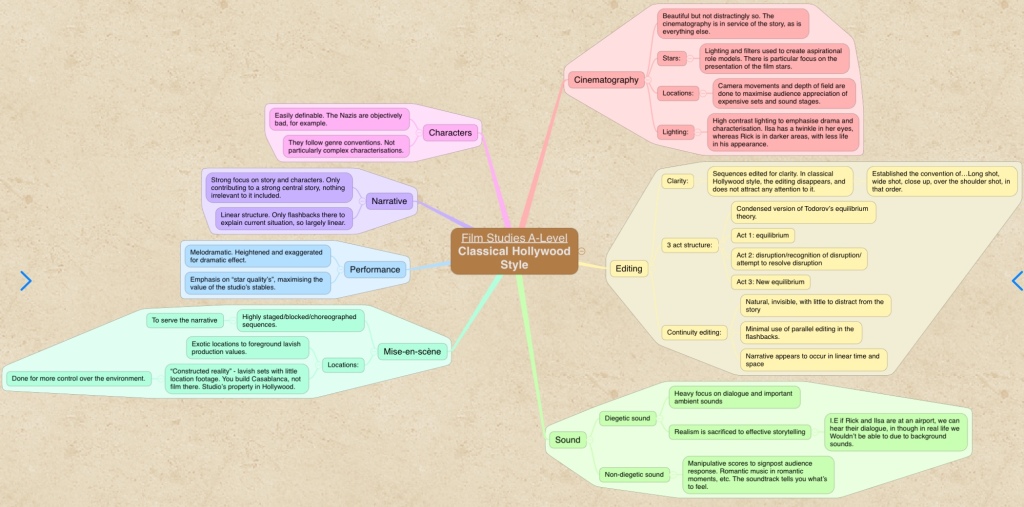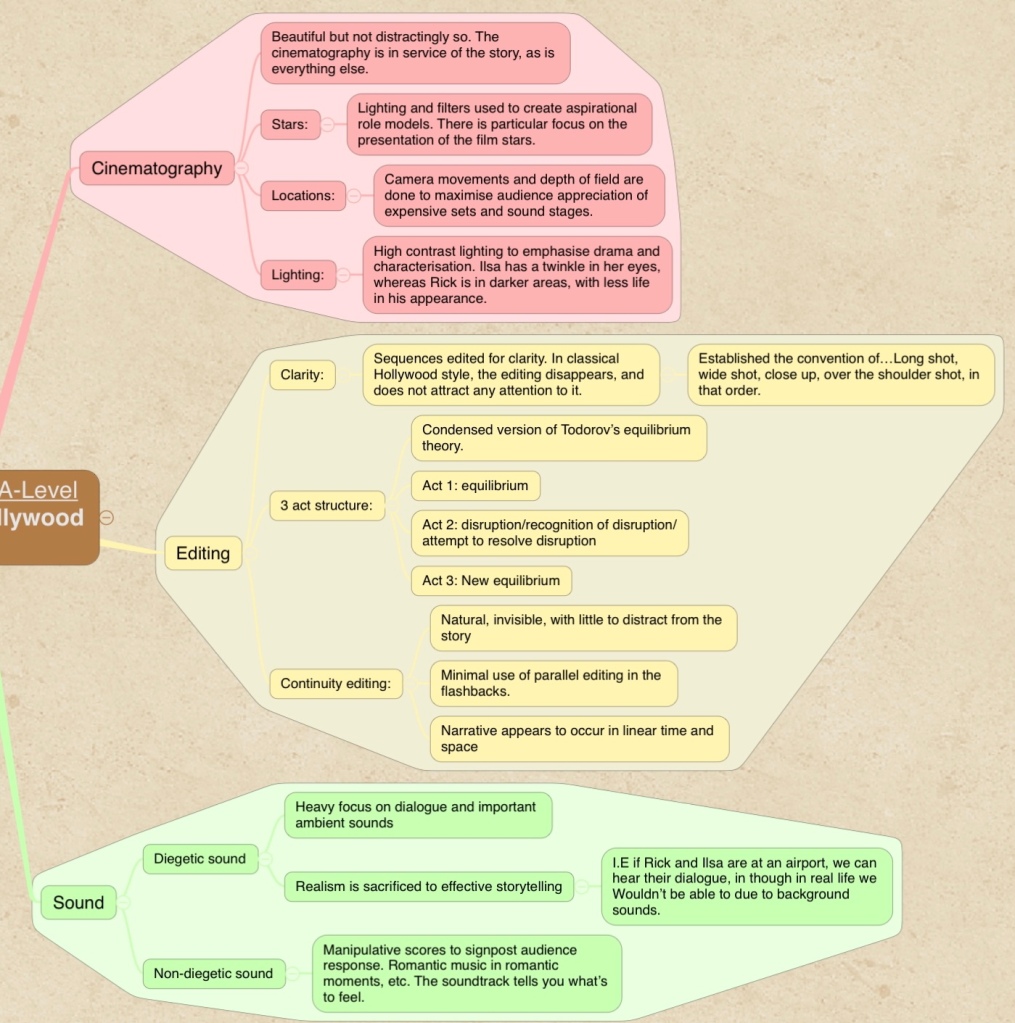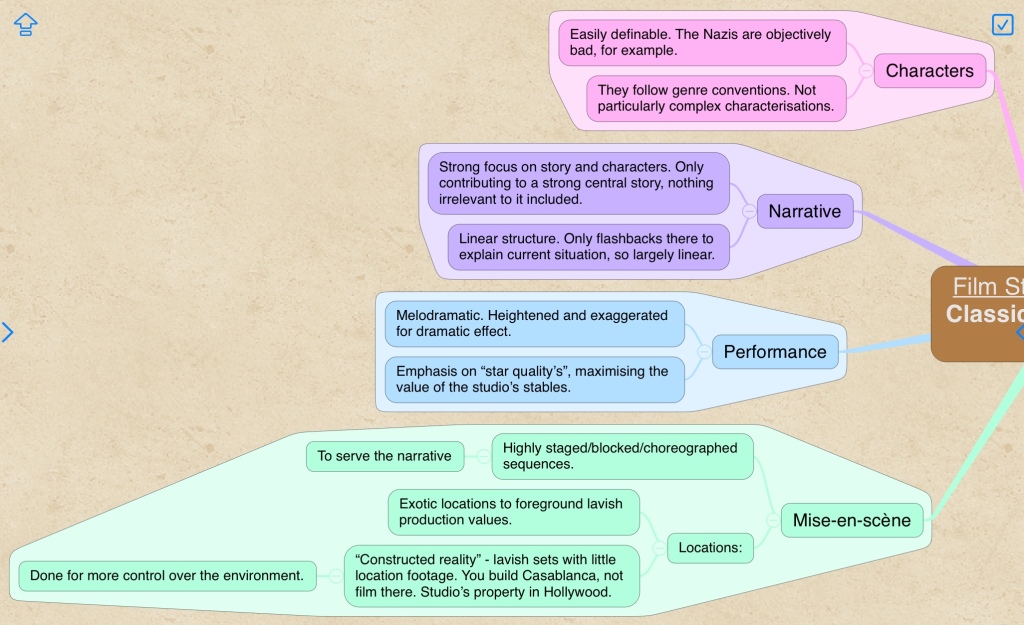Context:
Due to the size and influence of Hollywood as a centre for the American film industry in the 1930s, many artists were taking inspiration and ideas from one another as to how a film should be made. Experiments were made in camera movements, cinematography, mise-en-scen, etc. The result was the basis for all narrative cinema made today, many films of interest being ones that deviate from this structure, which is known as the Classical Hollywood Style.
The Classical Hollywood Style:
The classical Hollywood style refers to the widely used structure of filmmaking that rose in 1930s Hollywood. This structure paid all focus on production to the stars and the narrative of a film, so works to keep the audiences attention on these. Directors made their films to be so engaging and immersive for the audiences that saw it that they would not even notice the structural aspects of the film, such as editing, fake sets, actors, etc.
An example of how this was done is through editing. A very common way of shooting a scene would be to have a long shot of two characters, establishing their positions and distance to each each other. Then, a wide shot showing the two characters closer to the camera, bringing the audience further into the dialogue, which the directors wanted the audience to pay attention to. Then a close up would shot one character alone talking to show their face, and then an over the shoulder shot looking from behind them at the other person, and then the scene would shot-reverse-shot between over the shoulder shots to seamlessly bring the audience into the moment and the dialogue without distracting them with visuals, abrupt edits, etc. Everything centred around the story.
The stars were also a focal point for the filmmakers. For example, the cinematographers were in charge of making the actresses look glamorous and beautiful, and the villains held in shadow and dark areas. This is an example of how the director would direct the audiences attention, and inform them how to feel. This would also be done through emotional music. Melodramatic acting, exotic and expansive sets made in the studios, 3 act structures, linear narratives and conventional characters are also staples of the classical Hollywood style.
Long shots were used to immerse the audience and reveal lots of information, such as the layout of an environment, without making many cuts to potentially ruin immersion in the story. POV shots also grew in usage in this time period, effective for showing a character as they were and immersing the audience in the characters emotions and thought process in that moment. It tells them exactly how that character feels int hat moment we see it from their perspectives. Parallel editing done through cross cutting became popular to involve the audience in the plot further and raise the tension, thereby gaining their undivided attention.



You must be logged in to post a comment.